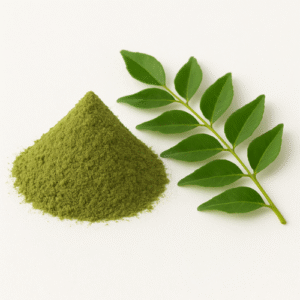Coconut sprouting is a fascinating process that begins when a mature coconut falls from its palm and finds a suitable spot to germinate. A coconut (Cocos nucifera) is not just a tropical delight enjoyed in beverages and desserts; it also has a remarkable life cycle that starts with the sprouting of the seed. The coconut embryo is a testament to nature’s ingenuity, showcasing resilience, adaptability, and the ability to thrive in challenging environments.
When a coconut germinates, it first forms a sprout from the germination hole, located at one of the three “eyes” on the coconut shell. This sprout is usually pale green or yellow, emerging in a delicate fashion as it pushes through the hard shell. As it grows, the sprout develops into a shoot, which will eventually become the stem of the new coconut tree. Below the surface, the coconut’s endosperm provides vital nutrients for the sprout. coconut flower has white, fleshy part is often referred to as coconut meat, while the clear liquid inside is known as coconut water. Both serve as nourishment during the sprout’s initial stages of development.
The sprout has a unique structure that allows it to thrive. The initial leaves are slender and elongated, resembling blades of grass. These young leaves are crucial for photosynthesis, which helps the sprout convert sunlight into energy. As the sprout matures, it will develop more leaves, creating a robust canopy that can photosynthesize effectively, enabling the plant to grow rapidly.
The growth of a coconut sprout is a remarkable journey. After the initial sprouting, the coconut develops a root system that anchors it into the soil. The roots extend outward and downward, searching for water and nutrients essential for the plant’s survival. Coconut palms thrive in sandy, well-drained soils, and they have a unique ability to tolerate saline conditions, making them well-suited for coastal environments.
As the sprout continues to grow, it typically reaches a height of several feet within just a few months. The combination of the coconut’s stored energy and its efficient root system allows the plant to flourish even in less-than-ideal conditions. Coconut palms are known for their height, often reaching between 50 to 80 feet, but the sprout stage is just the beginning of a long life cycle that can span several decades.
Environmental Adaptability of coconut embryo:
One of the most striking features of the coconut flower is its adaptability. Coconuts are often associated with tropical climates, but they can also grow in subtropical regions. The ability to thrive in salty environments and withstand high winds makes them particularly resilient. This adaptability is crucial, especially in coastal areas prone to storms and flooding. The coconut palm’s deep-root system helps stabilize sandy soils, preventing erosion and contributing to ecosystem health.
Moreover, the coconut embryo plays a significant role in promoting biodiversity. As it matures, it provides habitat and food for various species, including birds, insects, and mammals. The coconuts themselves are a vital food source for wildlife, and the tree’s structure offers nesting sites for birds and other animals.
Cultural and Economic Significance of coconut sprout:
Beyond its biological and ecological significance, the coconut sprout carries immense cultural and economic value. In many tropical countries, the coconut palm is referred to as the “tree of life.” Various parts of the tree are utilized for food, drink, and materials. The sprout, in particular, is often consumed as a delicacy in some cultures, prized for its tender texture and subtle flavor. Young coconuts are also a popular health food, with the water and meat celebrated for their hydrating and nutritional benefits.
In addition, coconut palms are a critical economic resource. They provide livelihoods for millions of people worldwide, from farmers to artisans who create handicrafts from coconut husks and shells. The sustainable cultivation of coconut palms helps support local economies while promoting environmental stewardship.
Conclusion of coconut flower:
The sprouted coconut is a remarkable representation of nature’s resilience and adaptability. From its humble beginnings as a seed to its potential as a towering palm, the sprout encapsulates the intricate processes of growth and survival. Its cultural, ecological, and economic importance further underscores its status as a vital component of tropical ecosystems and human societies alike. Embracing and understanding the life cycle of the coconut sprout reminds us of the beauty and complexity of the natural .
![Coconut sprout/Coconut Flower [Medium Size]- (Pack of 4) ["Express Delivery"] 1 mylaorganics.com](https://mylaorganics.com/wp-content/uploads/2020/06/Logox2_black.png)
![Coconut sprout/Coconut Flower [Medium Size]- (Pack of 4) ["Express Delivery"] 4 image 1](https://mylaorganics.com/wp-content/uploads/2023/12/image-1.jpeg)
![Coconut sprout/Coconut Flower [Medium Size]- (Pack of 4) ["Express Delivery"] 6 image 2](https://mylaorganics.com/wp-content/uploads/2023/12/image-2.jpeg)
![Coconut sprout/Coconut Flower [Medium Size]- (Pack of 4) ["Express Delivery"] 7 image 3](https://mylaorganics.com/wp-content/uploads/2023/12/image-3.jpeg)
![Coconut sprout/Coconut Flower [Medium Size]- (Pack of 4) ["Express Delivery"] 8 1 2](https://mylaorganics.com/wp-content/uploads/2023/12/1-2.png)
![Coconut sprout/Coconut Flower [Medium Size]- (Pack of 4) ["Express Delivery"] 9 image 5](https://mylaorganics.com/wp-content/uploads/2023/12/image-5.jpeg)
![Coconut sprout/Coconut Flower [Medium Size]- (Pack of 4) ["Express Delivery"] 10 51IaDT8tlxL 1](https://mylaorganics.com/wp-content/uploads/2023/12/51IaDT8tlxL-1.jpg)



![Coconut Sprout/Coconut Flower [Medium Size] - (Pack of 2) ["Standard delivery"]](https://mylaorganics.com/wp-content/uploads/2023/12/mylaorganics.com-5.png)
![Coconut sprout/Coconut Flower [Medium Size]- (Pack of 4) ["Express Delivery"] 11 mylaorganics.com](https://mylaorganics.com/wp-content/uploads/2020/06/Logox2_white.png)
![Coconut sprout/Coconut Flower [Medium Size]- (Pack of 4) ["Express Delivery"] 12 22423100000577](https://mylaorganics.com/wp-content/uploads/2024/01/22423100000577.png)
nullclass –
Tasty product. Value for money. The product is fresh and smells really good.